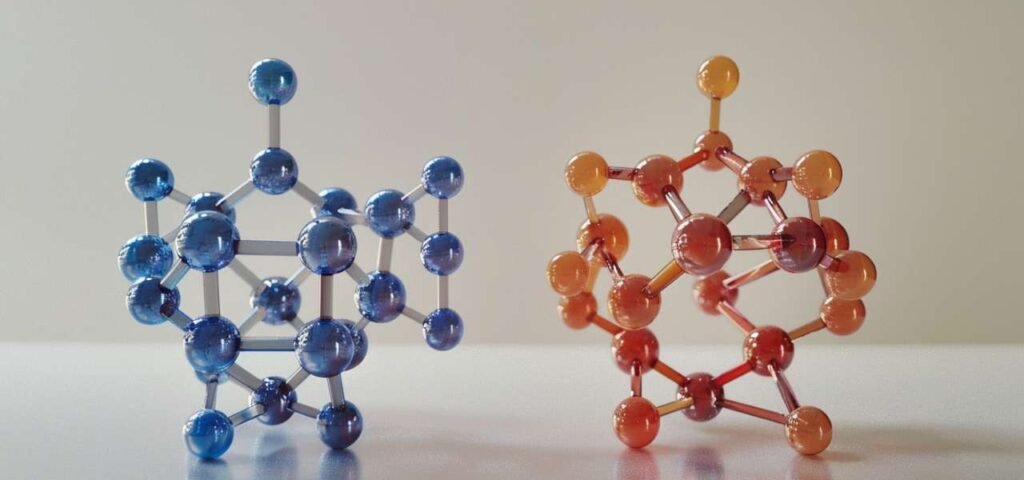1.Introduction
Can sodium-ion batteries truly replace lithium-ion batteries and become the mainstream in the battery market? Let’s discuss lithium batteries and sodium batteries. Before this, we also compared the differences between lithium-ion batteries and nickel-metal hydride batteries. Additionally, we compared 21700 batteries with 18650 lithium-ion batteries, hoping you can gain useful information from it.
Power solutions are undergoing transformations, and so are portable batteries. In this article, we bring you a rechargeable battery type, which is compared to popular battery types and has become one of the latest topics in the battery industry.
This article mainly introduces lithium batteries and sodium batteries. Despite sufficient research to make sodium a better alternative to lithium in portable power solutions, the standardization and commercialization of sodium batteries have only been a few years.
2.What is a Sodium-ion Battery
Generally, sodium batteries are another type of rechargeable battery, with a working principle very similar to lithium batteries; ions move between the positive electrode and the negative electrode. Why is sodium considered a promising alternative to lithium batteries? The answer lies in its chemical properties. Since lithium and sodium are both metallic elements and are closest in the periodic table, their main properties: valence electrons, charge carrying capacity, and charge-discharge reactions are consistent.

3.Working Principle of Sodium Battery
To understand the working principle of sodium batteries, we must delve deeper into their chemical composition. Like any other rechargeable battery, sodium batteries consist of cathodes, anodes, and electrolyte materials. When the active material is inserted into the electrolyte, oxidation occurs at the anode, and the electrode loses electrons. These electrons move to the cathode where a reduction reaction occurs. In this way, a current is generated, increasing the battery voltage, ultimately charging the battery.
4.Are Sodium Batteries Practical?
Since sodium is more abundant in nature than lithium, the sodium electrodes, the main component of sodium batteries, become cheaper, making these battery types a more cost-effective choice than lithium batteries. In the debate between lithium batteries and sodium batteries, the relative advantages of sodium batteries over lithium batteries are as follows:
(1)Sodium alloy (iron-nickel-manganese) cathode material, due to the abundance of cheap sodium salts, its raw material cost is almost half of that of lithium battery ternary cathode materials.
(2)At the same electrolyte concentration, the conductivity of sodium electrolyte materials is 20% higher than that of lithium materials, making it a more affordable option for low-concentration electrolyte solutions.
(3)While the energy density of sodium batteries cannot be compared to lithium-ion batteries, their cost-effectiveness is significant, making them replaceable for traditional lead-acid batteries.
5.Disadvantages of Sodium Batteries
(1)Sodium batteries mostly use organic solvents as electrolyte materials, which could be a significant safety issue as these organic solvents are highly flammable, potentially leading to explosions and fires.
(2)The volumetric energy density of sodium batteries is lower because of the presence of water molecules and CN groups in their crystal structure, releasing HCN molecules, thus lowering the density. More auxiliary materials and manufacturing costs are required in the battery production process.
6.What is a Lithium-ion Battery
The most common type of rechargeable battery; lithium-ion batteries mainly consist of four components. Cathode, anode, electrolyte, and separator. The cathode is the source of lithium ions, determining the voltage and capacity of these batteries, while the anode is responsible for the flow of current during battery charging.
When fully charged, the anode stores lithium ions. The electrolyte acts as a path between the anode and cathode. It can be a solvent, additive, or salt. Lastly, the separator is almost self-explanatory, acting as a physical barrier between the anode and cathode.
As lithium-ion batteries have high energy density, compact size, and lightweight, they have become a popular choice for portable electronic devices such as laptops, tablets, smartphones, and power tools.
7.Working Principle of Lithium-ion Battery
As mentioned above, lithium-ion batteries consist of four basic components and work by oxidation-reduction reactions that occur separately at the anode and cathode. Positive charges flow out from the anode and collect at the cathode, generating current. This current flows between the collector and the negative collector to the device being charged (in between), while the separator prevents the anode and cathode from contacting to form a short circuit.
8.Are Lithium-ion Batteries Practical?
(1)For all smart and high-tech devices where battery replacement is inconvenient, lithium-ion batteries have proven to be a good choice because they have a longer lifespan.
(2)Lithium-ion batteries can withstand a wide range of operating temperatures, making them ideal for use in hot climate areas and outdoor applications.
(3)Most importantly, lithium-ion batteries have higher power density and longer battery life, along with the ability for rapid charging and endurance, making them superior to traditional battery technologies.
9.Disadvantages of Lithium-ion Batteries
(1)Lithium-ion batteries typically withstand high temperatures but not low temperatures.
(2)Low-temperature use of lithium-ion batteries results in low capacity, severe attenuation, and poor cycle rates.
10.Applications of Lithium-ion and Sodium Batteries
The chemical properties of lithium-ion batteries and sodium batteries determine their key applications.
(1)Lithium-ion batteries, due to their high energy density and operating voltage, are the preferred choice for charging portable electronic devices such as solar power systems, RVs, boats, golf carts, etc.
(2)On the other hand, sodium-ion batteries, due to the abundance of sodium elements in nature, strong heat adaptability, non-flammability, and high energy, have proven to be a promising future technology. They are used in energy grids, electric vehicles, and similar applications.
11.Operating Temperature Range of Lithium-ion and Sodium Batteries
The operating temperature of lithium-ion and sodium batteries depends on the discharge efficiency and cycle life. The suitable operating temperature for sodium-ion batteries is -40-+60℃, while that for lithium-ion batteries is -20-60℃.

12.Differences Between Lithium Batteries and Sodium Batteries
The main differences between lithium batteries and sodium batteries lie in their performance and temperature range.
In terms of elemental characteristics, it is clear that lithium has better electrochemical properties compared to sodium, enabling better energy transfer. In summary, lithium batteries have been proven to be superior to sodium batteries in terms of performance and durability.
Sodium batteries do not suffer from thermal runaway, meaning these batteries are less prone to fire and can operate effectively in cold environments. In short, sodium-ion batteries offer superior performance over a wider temperature range.
(1) Size
When discussing the size of lithium batteries and sodium batteries, we must consider two important factors: energy density and charge per unit volume.
Generally, for storing the same amount of energy, sodium-ion batteries have a larger size than lithium-ion batteries because sodium-ion batteries have lower energy density, resulting in lower charge per unit volume. However, with technological advancements, we expect to improve the energy density of both lithium and sodium batteries, which would allow us to provide smaller yet more powerful battery solutions.
(2) Cost
Comparing the prices of lithium batteries and sodium batteries, although there is still much work to be done to commercialize sodium-ion batteries and make them widely available, it is expected that the price of sodium-ion batteries will be 30-40% lower than that of lithium-ion batteries, the ionic counterpart.
13.Performance Comparison of Lithium Batteries and Sodium Batteries
Due to their better electrochemical properties and effective transfer performance, lithium-ion batteries outperform sodium-ion batteries. Their higher energy density and lower internal resistance make them the preferred choice for all portable electronic devices that require frequent recharging.
In the debate between lithium batteries and sodium batteries, battery price and environmental impact are paramount considerations, where sodium-ion batteries offer superior performance. For example, in grid storage devices, where large-capacity batteries require longer storage times and lower charging frequencies, sodium-ion batteries are a good choice.
14.Which Battery is Safer: Lithium-ion or Sodium-ion?
When discussing the safety factors of lithium-ion batteries and sodium-ion batteries, there have been numerous reported cases of lithium-ion battery explosions and fires worldwide. Additionally, this is mainly for lithium cobalt oxide batteries, but not all lithium-ion batteries contain unsafe materials, like lithium iron phosphate batteries, which use safe and environmentally friendly materials without toxic heavy metals.
In contrast, sodium-ion batteries do not require special considerations for their safe handling, use, and storage, as their safer chemical composition ensures that the batteries will never experience any such failures.
15.Are Sodium Batteries Better Than Lithium Batteries?
Considering the abundance of sodium in the earth’s crust compared to lithium, scientists believe that in the foreseeable future, we can rely on sodium, and it will be a more affordable, more economical, and sustainable alternative.
However, various types of research are ongoing to conclude that sodium batteries are more environmentally friendly than lithium batteries, and current evidence is insufficient to make a final decision.
16.Will Sodium-ion Batteries Replace Lithium-ion Batteries?
Given the abundance of sodium and its favorable chemical properties, there is a greater opportunity for sodium to replace lithium-ion batteries as a cheaper, more environmentally friendly solution. If this happens, sodium-ion batteries will reduce the cost of replacing lithium-ion batteries by nearly half.
However, sodium batteries cannot completely replace lithium-ion batteries as they are not suitable for applications requiring high energy density, such as smartphones, laptops, or marine batteries, among others.
Large-capacity vehicles with lower energy density requirements still have market demand. In the future, sodium batteries such as distributed energy storage and grid storage will have broad application prospects.

17.Why Aren’t Sodium-ion Batteries Used?
Sodium-ion batteries have an energy density disadvantage compared to lithium-ion batteries (such as lithium iron phosphate and lithium manganese oxide). Moreover, they do not have much of a cost advantage.
Sodium-ion batteries have not been widely used. Firstly, the upstream supply chain for sodium-ion batteries is not mature, and there are many potential performance flaws. Sodium batteries have not gained a significant cost advantage. When choosing between lithium-ion and sodium-ion batteries, users are more willing to accept the more mature lithium-ion battery products.

